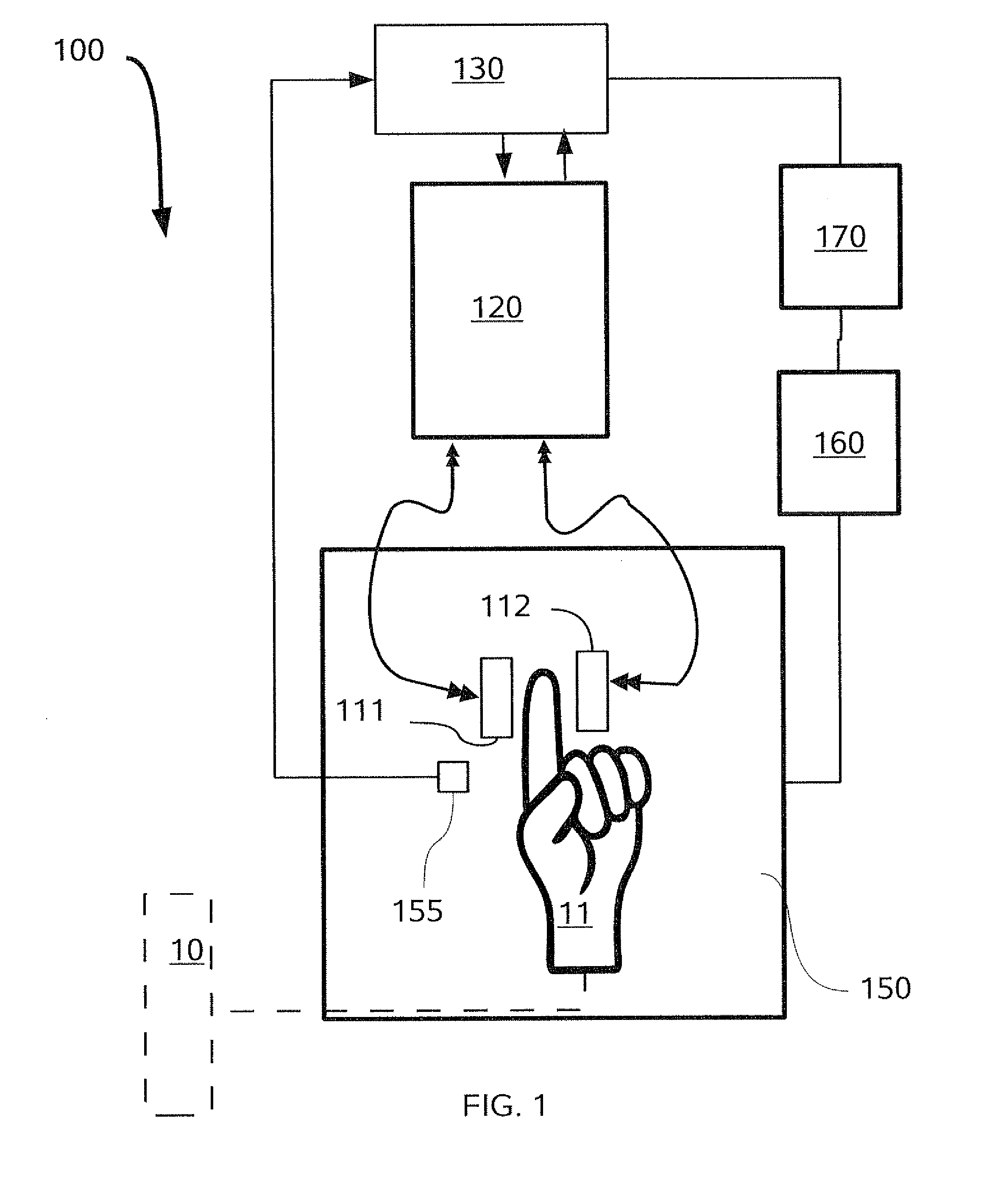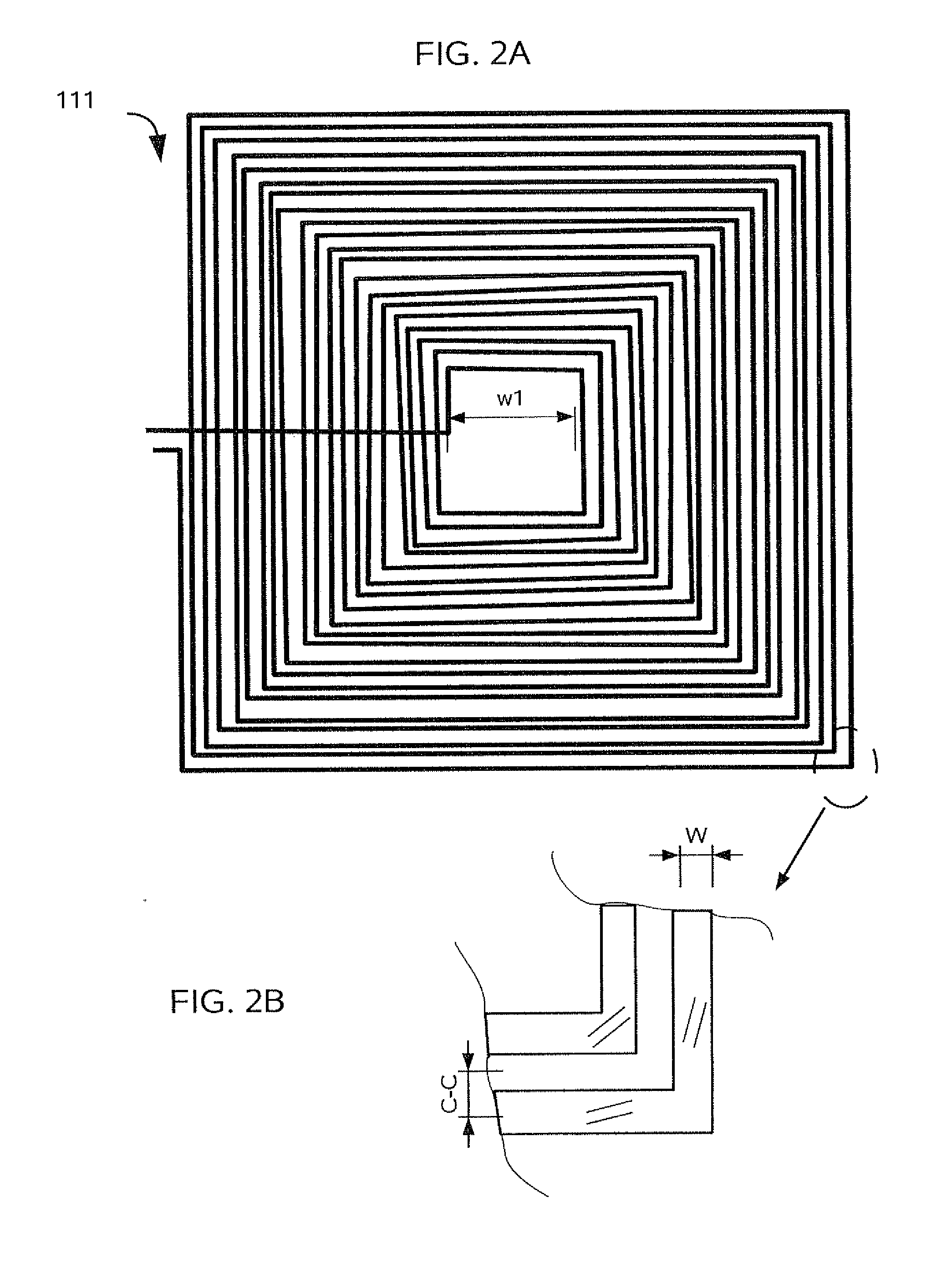Coupled antenna impedance spectroscopy
a technology of impedance spectroscopy and coupled antennas, which is applied in the field of molecular spectroscopy of matter, can solve the problems of loss of signal to noise ratio and affect the commercial viability of methods
- Summary
- Abstract
- Description
- Claims
- Application Information
AI Technical Summary
Problems solved by technology
Method used
Image
Examples
Embodiment Construction
[0042]Referring to FIGS. 1 through 20, wherein like reference numerals refer to like components in the various views, there is illustrated therein a new and improved device and method of Coupled Antenna Impedance Spectroscopy.
[0043]One embodiment of the inventive apparatus 100 for Coupled Antenna Impedance Spectroscopy is shown in FIG. 1 and can be deployed for either in vivo detection or in vitro samples. Apparatus 100 deploys a pair of coiled or patch antennas 111 and 112 on opposing sides of a test tube 10 (for in vitro measurement) or a limb 11, such as a finger, for in vivo measurements. It should be appreciated that in place of a test tube, a continuously flowing dielectric media can be sampled, such as a pipe in a process stream. The antennas 111 and 112 are energized via a vector network analyzer (VNA) 120. The vector network analyzer 120 is in signal communication with a general purpose computer 130 or microprocessor to perform calculations and calibration processes describ...
PUM
 Login to View More
Login to View More Abstract
Description
Claims
Application Information
 Login to View More
Login to View More - R&D
- Intellectual Property
- Life Sciences
- Materials
- Tech Scout
- Unparalleled Data Quality
- Higher Quality Content
- 60% Fewer Hallucinations
Browse by: Latest US Patents, China's latest patents, Technical Efficacy Thesaurus, Application Domain, Technology Topic, Popular Technical Reports.
© 2025 PatSnap. All rights reserved.Legal|Privacy policy|Modern Slavery Act Transparency Statement|Sitemap|About US| Contact US: help@patsnap.com



